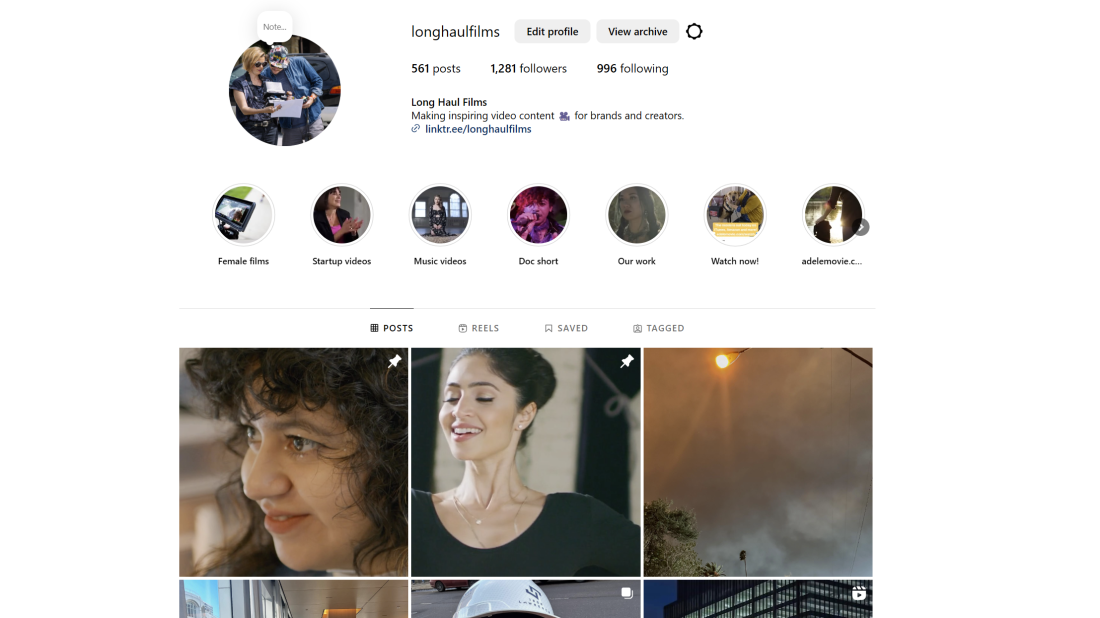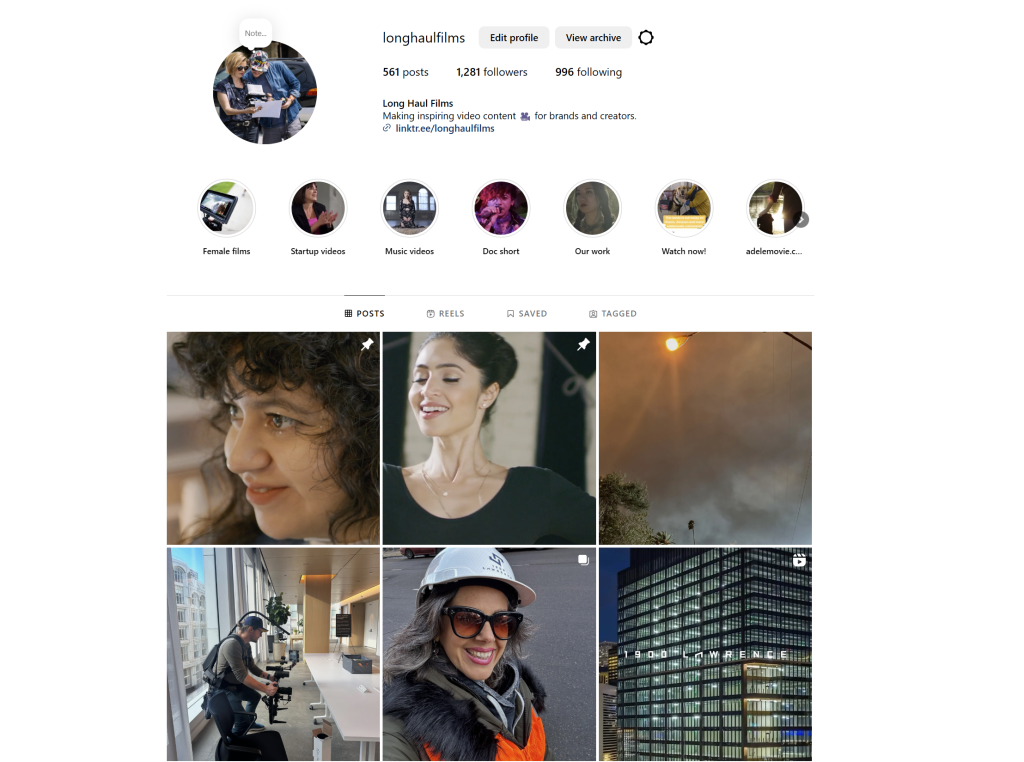
What platform should I put my marketing videos on?
By tom@longhaulfilms.com in Uncategorized
There’s no question that in a crowded digital landscape, video content is one of the most effective ways to engage with your audience. Whether you’re showcasing a new product, sharing a brand story, or providing helpful tips, videos can convey your message more dynamically than text or static images alone. However, choosing the right platform for posting your marketing videos is as crucial as the content itself. With so many social media platforms to choose from, each with its own audience and content style, it can be overwhelming to know where to focus your efforts.
To help you make an informed decision, we’ve outlined the top social media platforms to consider for your marketing videos, along with tips on how to optimize your content for each one.
1. YouTube: The King of Video Content
When it comes to video, YouTube is the go-to platform for long-form content and is still the second-largest search engine globally (behind Google). It’s perfect for businesses looking to create in-depth videos, tutorials, customer testimonials, behind-the-scenes content, and more.
Why choose YouTube?
- Searchability: YouTube videos often show up in Google search results, giving your content the potential to reach a larger audience through organic search.
- Monetization Opportunities: If your business is ready to explore monetization through ads or partnerships, YouTube offers robust options.
- Long-form Content: If you’re creating videos longer than 2-3 minutes, YouTube’s platform is ideal for hosting this content.
Tips for YouTube:
- Audiences are used to watching longer videos on YouTube, so this is a great platform to host content where you’re telling a more complex story.
- Create high-quality, well-edited videos that offer value to your audience.
- Optimize video titles, descriptions, and tags with relevant keywords to improve discoverability.
- Consistently upload content to build a dedicated following.
2. Instagram: The Visual Playground

Instagram is perfect for businesses aiming to reach younger audiences (18-34 years old) with creative, eye-catching videos. With its emphasis on aesthetics and visual appeal, Instagram is the ideal platform for short-form video content such as teasers, behind-the-scenes clips, influencer partnerships, and product showcases.
Why choose Instagram?
- Reels: Instagram Reels allows you to post short, engaging videos (up to 90 seconds) that have the potential to go viral due to Instagram’s algorithm promoting fresh content.
- Stories: Instagram Stories are great for real-time updates, quick announcements, or limited-time promotions.
- Engagement: Instagram users are highly interactive, making it an ideal platform to engage with your community through comments, likes, and shares.
Tips for Instagram:
- Keep videos concise and visually engaging. Prioritize the first few seconds to grab attention.
- Use captions to make your content accessible to those watching without sound.
- Leverage hashtags and location tags to expand your content’s reach.
- Before you even begin shooting, think about your video’s aspect ratio, as Instagram tends towards 9:16 videos (vertical) vs 16:9 videos (horizontal)
3. Facebook: The All-In-One Platform
While Facebook’s user base skews slightly older compared to platforms like Instagram or TikTok, it still boasts a massive audience with over 2.8 billion active users. Facebook is ideal for a variety of video types, from product demos and event promotions to customer stories and educational content.
Why choose Facebook?
- Variety of Formats: From Facebook Live and Stories, to feed posts and carousel ads, Facebook offers many ways to distribute video content.
- Strong Targeting Capabilities: If you’re running ads, Facebook’s ad manager allows for highly detailed targeting, ensuring that your video content reaches the right people.
- Engagement: Facebook users often engage in discussions in comments or share content within their networks, which can help amplify your videos organically.
Tips for Facebook:
- Optimize your videos for autoplay, meaning they should be visually compelling in the first few seconds.
- Use Facebook’s Call-to-Action buttons to guide users towards the next step, whether it’s making a purchase or signing up for a newsletter.
- Post videos directly to Facebook rather than sharing YouTube links for better reach.
- Facebook is full of groups engaged around specific topics. Build relationships within relevant groups, allowing you to share relevant content with audience members who care about your subject matter.
4. TikTok: The Home of Viral Content
TikTok is particularly popular with Gen Z and millennials. It’s ideal for short, entertaining, and authentic video content that has the potential to go viral. If your brand is fun, edgy, or wants to connect with younger consumers, TikTok is the place to be.
Why choose TikTok?
- Viral Potential: TikTok’s algorithm gives even new accounts the opportunity to have their videos go viral with the right content.
- Creative Freedom: TikTok allows you to post fun, creative, and often humorous videos. That’s great for showcasing your brand’s personality.
- Short-Form Content: TikTok favors videos that are short and to the point. This makes it perfect for snackable content like challenges, memes, or quick tips.
Tips for TikTok:
- Keep your videos short, engaging, and authentic. TikTok users love content that feels real and unscripted.
- Participate in trending challenges or use popular sounds to increase visibility.
- Include a strong hook in the first 3-5 seconds to grab attention quickly.
- TikTok can be an ideal platform to integrate influencer marketing and user generated content into your video strategy.
5. LinkedIn: The Professional Network
It may not be the first platform that comes to mind for video marketing. But LinkedIn is incredibly effective for B2B (business-to-business) content. LinkedIn is where professionals engage with thought leadership, case studies, company updates, and industry-related news. If you’re targeting other businesses, LinkedIn is an excellent platform for educational or informative videos.
Why choose LinkedIn?
- Professional Audience: LinkedIn’s audience consists of professionals and decision-makers who may be interested in your B2B products or services.
- Thought Leadership: Posting insightful, informative video content can position your brand as a leader in your industry.
- Engagement for Educational Content: Videos that provide value—like webinars, case studies, or how-to content—tend to perform well on LinkedIn.
Tips for LinkedIn:
- Focus on high-value, industry-related content, such as webinars, tutorials, and business insights.
- Tie your video content in with industry trends that your customers care about. Look for opportunities to encourage discussion and debate in the comments.
- Keep videos professional and educational rather than overly promotional.
- Use LinkedIn’s native video player for better reach and engagement.
Conclusion
When it comes to choosing the right social media platform for your marketing videos, there’s no one-size-fits-all answer. The best platform for your videos will depend on your target audience, the type of content you’re creating, and your overall marketing goals.
- Use YouTube for longer, searchable content.
- Post to Instagram for visually appealing, short-form videos.
- Leverage Facebook for variety and audience targeting.
- Take advantage of TikTok for creative, viral short-form videos.
- Opt for LinkedIn if you’re focusing on B2B or thought leadership content.
- Don’t use X (formerly Twitter). You know why.
By tailoring your video content to each platform’s strengths and audience, you can maximize engagement and drive better results for your business. Happy posting!
